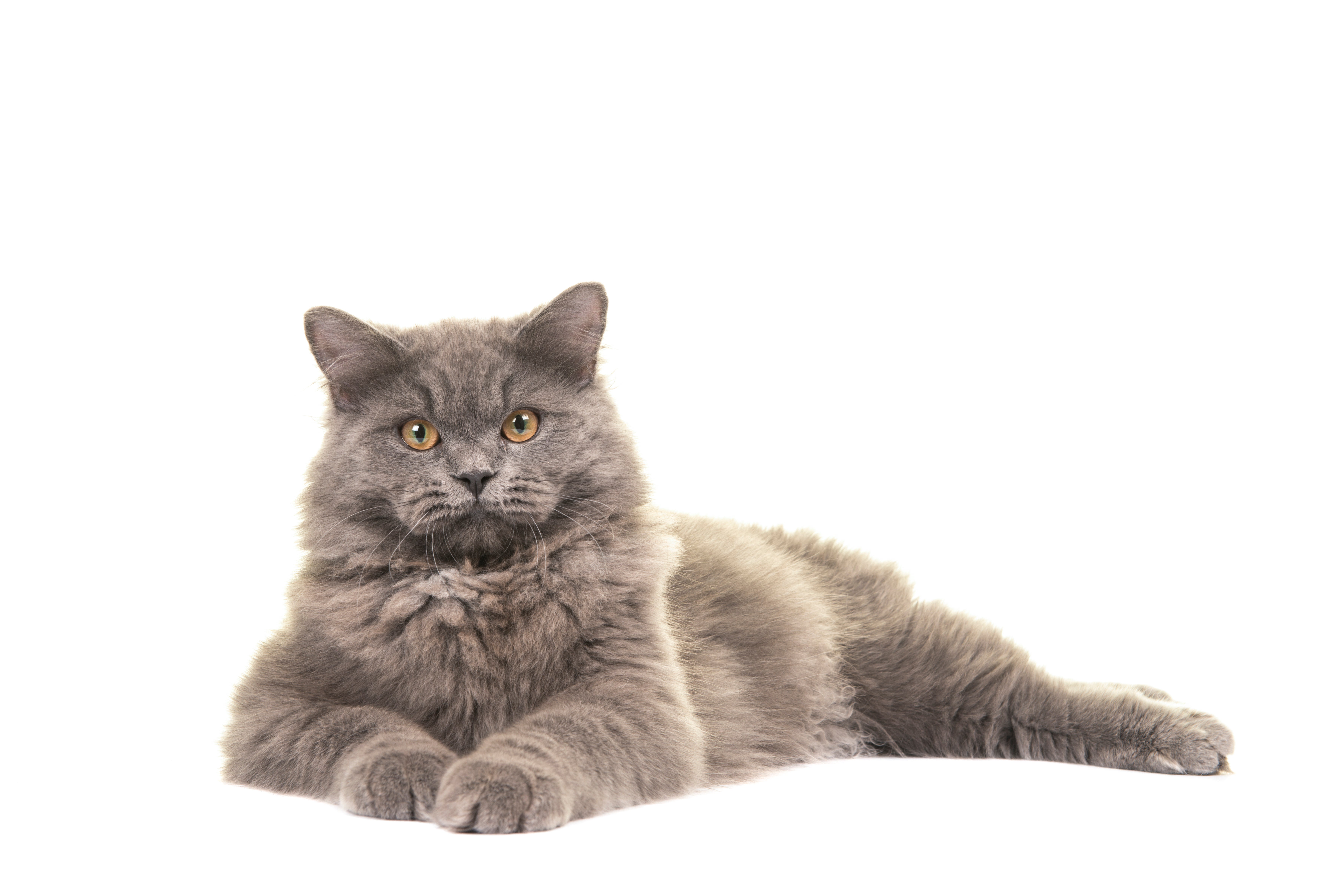British Longhair
The British Longhair is a medium-sized, short, and muscular cat breed. It has a wide chest and loves relaxing and resting more than anything. Underneath an impressive straight, resilient, and weather-proof coat, there is a compact and powerful cat: a broad chest, short and strong legs, and neat round paws. The coat is semi-longhair and should be dense, with tufted feet and plenty of fur on the ears.
Breed characteristics carousel
Learn More
Need to Know
- Great for first-time cat owners
- Great for first-time cat owners
- Inquisitive cat
- Sociable and dependent cat
- Slightly talkative cat
- Average build cat breed
- Requires grooming every day
- Likes a bit of both indoor and outdoor space
- Great family cat
- Can be regularly left alone for a few hours
- Great for a relaxed home

Personality
Playful and adorable with huge eyes and lots of excess fluff, these sly cats are prone to more thoughtful and lazy behavior such as planning, plotting, and observing rather than engaging in cat-based shenanigans. While they do like to get outdoors every now and then, they’re a little too trusting and slow to react, making them vulnerable. Like an introvert, they love to observe, albeit sometimes too quietly as they can be easy to ignore. However, they can benefit from human interaction and socialization.
The British Shorthair cat is one of the most recognizable cats in the world. The British Longhair is a relatively recent variant, crossed with Persian Cats. These English cats were introduced to the United States in the second half of the 20th century and have become beloved for their plush, stuffed animal-like coats, sturdy builds, and affectionate yet calm personalities.
The British Longhair will make an excellent family pet for a home with older children who understand how to respect a cat’s space. They do not like to be picked up and feel insecure about it, so small children who might be tempted to take a British Longhair along for a playdate aren’t ideal. While they are happy to observe chaos, a chaotic house is hard for them to manage, so they do well with quieter environments.
Your British Longhair will adore outdoor time, such as supervised romps, free access to a cat-proof backyard, or a cat run. These cats love a good bed rot, but it’s important to keep them moving, even if only to switch up their sunny patches. They should not be let loose without supervision as they can be too slow and too trusting and might get themselves in sticky situations.
They do well inside with outdoor time sprinkled in.
Whether they like it or not, The British Longhair will need daily grooming. They will attempt to groom themselves, but they are unlikely to do an effective job. Check around the face for food debris and eye discharge, and check their bottoms for dirt after using the restroom.
Remember Garfield? The British Longhair is similar, fond of lazing around, sleeping, and eating. This can cause weight issues so it is important to mentally stimulate, motivate, and spend time each day playing with them, especially British Longhaired kittens so that they get into a good routine. They won’t become whiny or demanding if they don’t get enough stimulation, but they are sensitive characters who need their needs met. If not, they could default to behavioral issues like potty problems, overgrooming, or scratching
The British Longhair will make an excellent family pet for a home with older children who understand how to respect a cat’s space. They would prefer a home that does not have regular influxes of chaos. They are happy with some alone time each day.
The cost of a British Longhair from a breeder is significantly more than the cost of adopting one from a local shelter or rescue. The adoption fee usually covers additional items such as spaying or neutering, vaccines, and microchipping.

Learn more about feeding and caring for your British Longhair on Purina.
Did You Know?
- The British Longhair cat is a derivative breed of the British Shorthair cat, perhaps the world’s first selectively bred cat breed.
